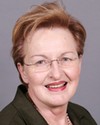Thank you, Madam Chair.
I am pleased to appear before this committee on the subject of the investigation the Privy Council Office recently conducted into unauthorized disclosures of sensitive diplomatic information. You have already introduced my colleagues, and better than I would have done.
On March 5, 2008, the Prime Minister asked me to launch an internal security investigation into allegations of unauthorized verbal disclosures by Mr. Brodie and Ambassador Wilson regarding the purported position of U.S. Democratic presidential candidates in relation to the North American Free Trade Agreement and the unauthorized disclosure of the diplomatic report sent from the Canadian Consulate General in Chicago on February 13, 2008.
On May 22, 2008, I delivered to the Prime Minister the report on the investigation into unauthorized disclosure of sensitive diplomatic information, which contains our findings and conclusions. And we'll get into that today. This report was made public the next day and is available on the Privy Council website for everyone.
The purpose of the investigation, as the report sets out, was to determine the timeline of relative events leading up to and following the disclosure of information; to determine, to the extent possible, the source or sources of the disclosure; to report on the findings of the investigation; and to make recommendations to minimize the likelihood of a reoccurrence of similar events in the future.
The investigation was led by the director of security operations at the Privy Council Office, Mr. Tardif. Independent professional services were contracted from BMCI Investigations & Security. We have two of the principals here today. Due to the scope and complexity of the investigation and the volume of information to be examined, we engaged BMCI.
As the report describes, the investigation was carried out in a comprehensive, systematic, and impartial manner in accordance with established investigative standards. And I'm sure that both Mr. Tardif and our two principal investigators will describe what they are.
The investigative process that was followed included examining documentation; conducting comprehensive interviews of 36 individuals; compiling and analyzing reliable source data; and examining salient comments received from various secondary sources during meetings and briefings. The Department of Foreign Affairs and International Trade Security and Intelligence Bureau, represented here by Mr. Paul Meyer, PCO's Informatics and Technical Services, PCO's Telecommunications Services, also represented here, and departmental security officers of four other federal departments also provided assistance in this investigation.
The investigation was extensive and independent. It involved obtaining and analyzing a vast amount of information in a relatively short period of time. The 36 public servants and political staff interviewed consisted of officials from the Prime Minister's Office, the Privy Council Office, the Department of Foreign Affairs and International Trade Headquarters in Ottawa, the Embassy in Washington, the Consulate General in Chicago, and the Office of the Minister of Foreign Affairs. Several officials were interviewed twice.
In addition to the interviews, the investigation involved checking logs of telephone calls placed by these officials of interest on their office land lines and cellular telephones for the relevant time period. These were examined to determine if any contact had been made with the media or with other numbers of interest in either Canada or the United States. Transmission logs for fax machines used by officials of interest during the same timeframe were similarly examined. All e-mails of the same officials were checked to determine who had knowledge of the information and at what point in time, the extent of that knowledge, and whether any inappropriate transmission of information had occurred.
Finally, unclassified, classified, and BlackBerry electronic mailboxes of the federal officials and ministerial staff who received the original diplomatic report from Chicago were examined to determine whether the report was retransmitted to others, and, if so, who those addressees were and whether it was inappropriate for them to receive the report.
During the course of the investigation, the names of a few U.S. citizens surfaced as possibly having been in contact with Canadian officials with access to the report. This fact was clearly outlined in the report on page 8.
As no Canadian government investigator, including the RCMP, has jurisdiction on U.S. territory without the consent of the U.S. government or U.S. law enforcement agencies, the approach of the investigators was to focus on ministerial staff and officials employed by the Government of Canada who may have been in contact with them. This approach included extensive interviews with these Canadian individuals and examination of telephone, fax, and e-mail logs, as well as e-mail correspondence.
The report of the investigation describes the methodology and process employed by the investigators, establishes a timeline of significant events that happened over this period, summarizes the investigators' analysis and findings, and makes recommendations for further strengthening the safeguards for the protection of information. The conclusions of the report are based entirely on the findings of the independent investigative team working with the Privy Council Office, director of security operations. Section 5 in the report, Madam Chair, provides the conclusions of the investigation. These are as follows.
First, any comments that Mr. Brodie may have made during budget lock-up 2008 on February 26 did not reveal any information tied to the diplomatic report of which he was made aware only on February 28. That's the value of the timeline. There is no evidence that Mr. Brodie disclosed any classified information.
Second, there's no evidence that Ambassador Wilson revealed any information tied to the diplomatic report or to any U.S. presidential candidate's position with respect to NAFTA, although his comments likely helped lead the reporter to the Senator Obama campaign. There is no evidence that Ambassador Wilson disclosed any classified information.
Third, the investigation was unable to determine who leaked the report, to whom it was leaked, and whether there was only one leak.
Fourth, the original diplomatic report from Chicago was incorrectly classified. It was actually unclassified and had an inappropriately broad distribution list of 232 addressees.
Madam Chair, there you have an overview of the facts.
I would be pleased to take questions from the honourable members of the committee and my colleagues as well.
Merci. Thank you.


